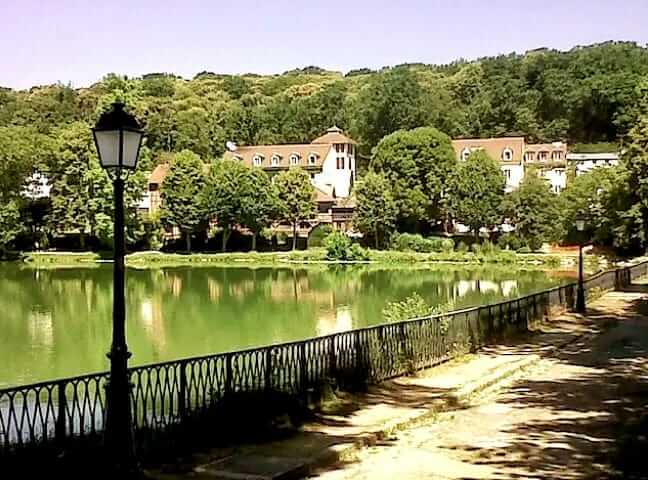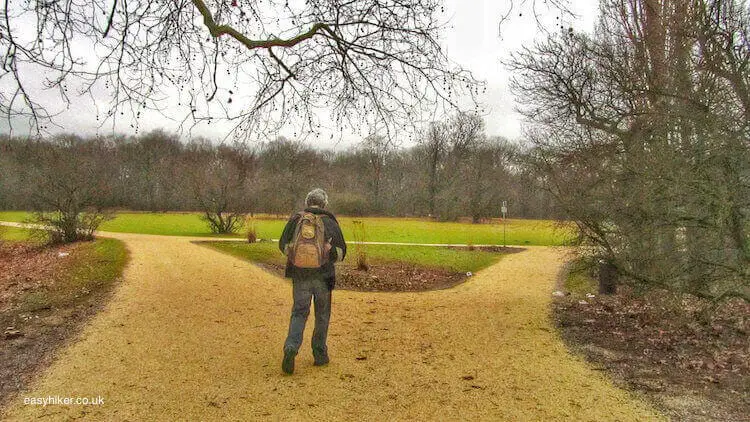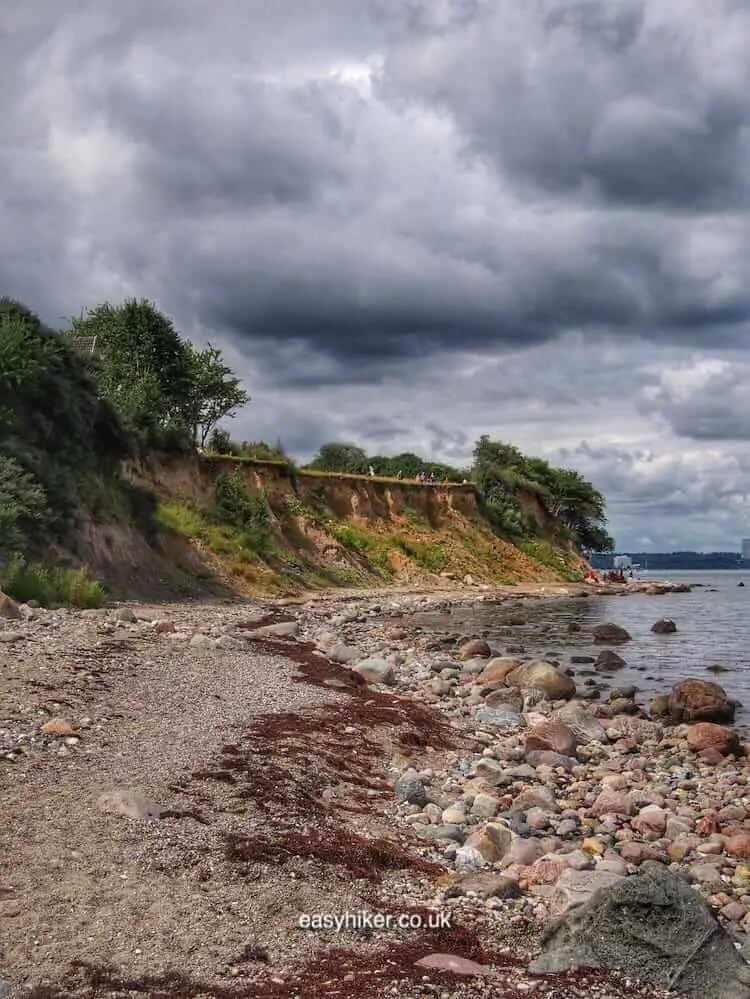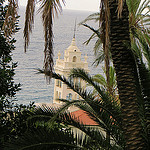As far as most tourists are concerned, the Riviera mainly consists of mountains and beaches. But that does not mean that mountains and beaches are all there is.
In many places, admittedly, the transition from one to the other is rather sudden and immediate.
On the French side of the Riviera (in particular), the mountains can descend fairly steeply into the sea, so one minute on your trip you may hear the gentle click of petanque balls under tall cypress trees in a hillside village, and the next minute the roar of speedboats down by the coast.
But sometimes, there is also a broad strip of land that divides the coast from its mountainous back country.
Today’s walk is dedicated to an exploration of this country between the cold reserve of the mountains and the hot intensity of the Mediterranean lowlands.
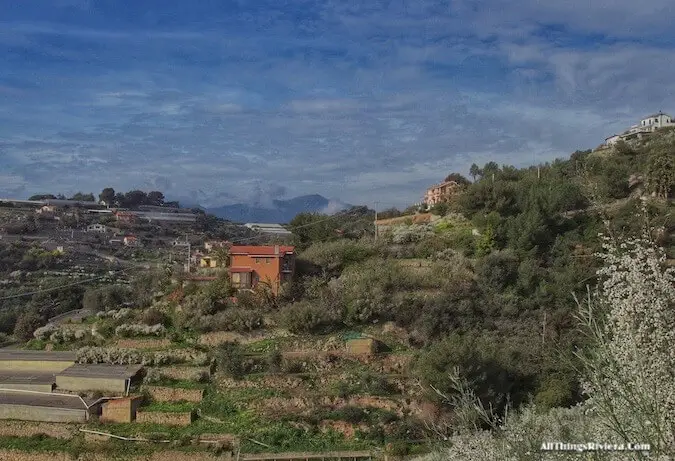
This strip of land is also where the differences between the French and the Italian Riviera are particularly stark.
In France, this strip (where it exists) is almost exclusively built up with residential homes – the entire city of Nice, you might say, was constructed on land between mountain and sea, and so were the suburbs of Cannes.
In Italy, conversely, this strip is mainly used for agricultural purposes, for commercial gardens that grow vegetables, occasionally, but mainly flowers.
This means: when you want to explore this strip, you must be prepared to meet civilization, so your trip will – at best – provide cultural interest rather than spectacular natural beauty.
But once you have accepted that, you may well find that such an excursion may be well worth your while – and there are, the Riviera being what it is, still many beautiful things to spot by the side of the trail.
Hiking the Steep Bordighera Hills
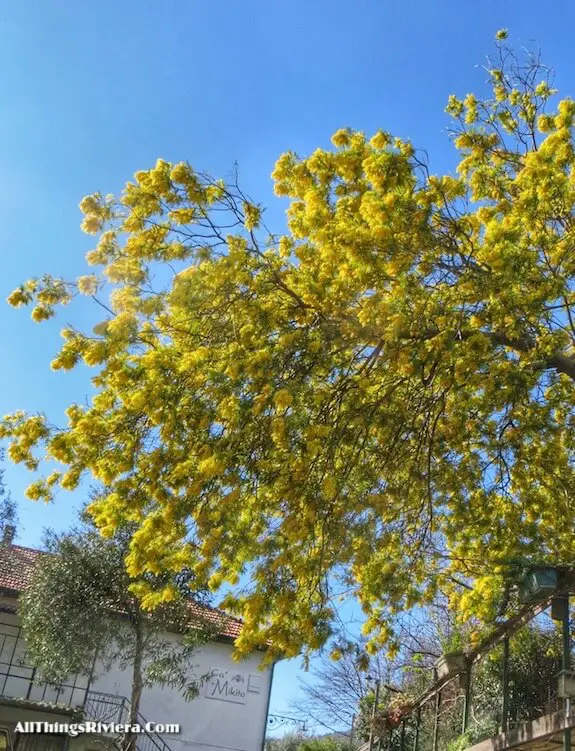
Today, we are off to Bordighera, conveniently located between the well-connected resort towns of Ventimiglia and Sanremo and within easy reach of either (by bus or by train).
Start your walk by strolling down the lungomare (turning left just behind the train station), reputedly the most beautiful seaside promenade on the coast, dedicated to Eva Peron who paid a visit here in 1947, at the height of her fame and three years before her untimely death. Don’t cry for me, Bordighera!
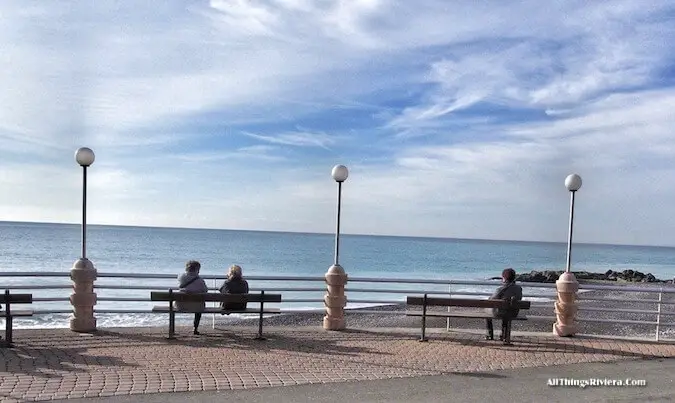
We walk to the very end of the Lungomare, past Sant’Ampelio Church …
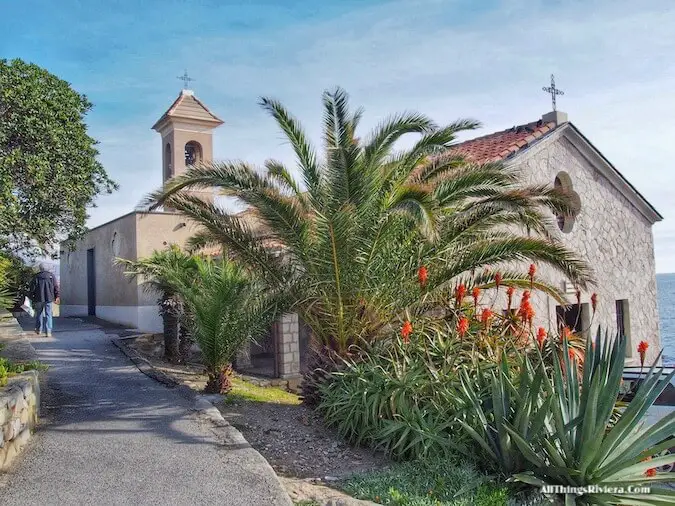
… and continue down by the sea …
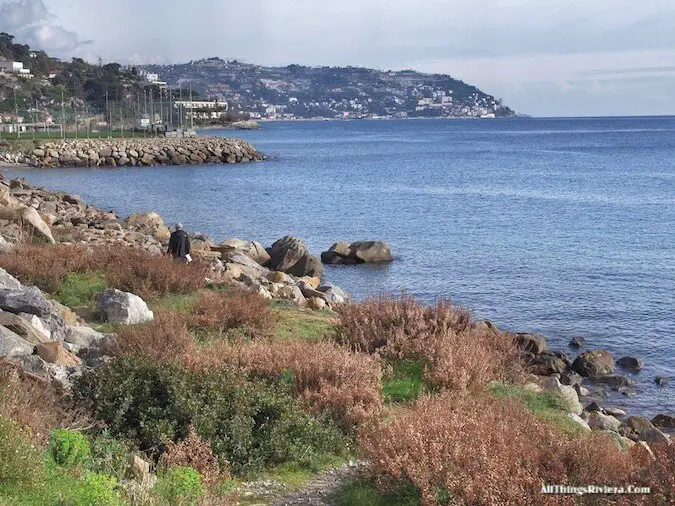
… before, just in front of the football stadium, we cut left through an underpass called Via dei Pescatori which will lead us to the busy main road.
Turn right here and cut further inland on Via Winter, which you should follow to its very end.
Continue along the narrow path and up the steps before taking the uphill turn on your right behind the greenhouse and, at the next crossing, left in the direction of a small pink house on the top of the hill.
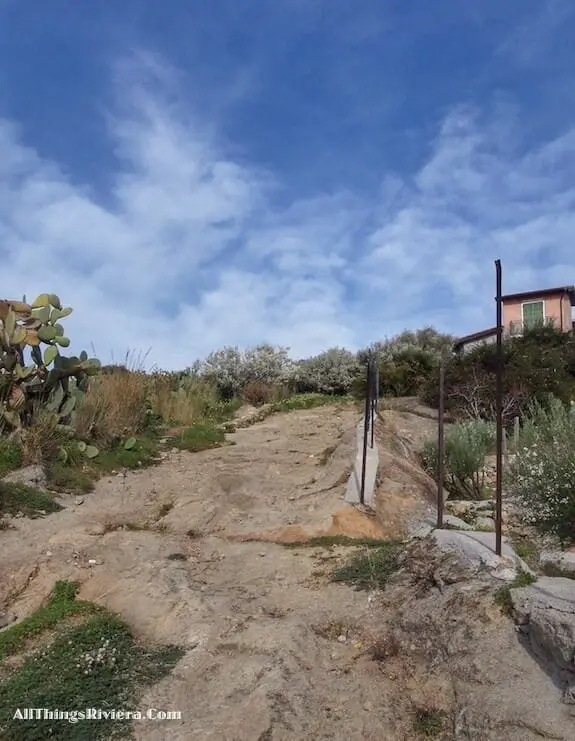
You will then reach a steep, asphalted road called Via Nandria.
At the next crossing, follow the main road by turning right. Follow this road through a succession of sweeping curves until you reach the Sanctuary of Our Lady of Monte Nero.
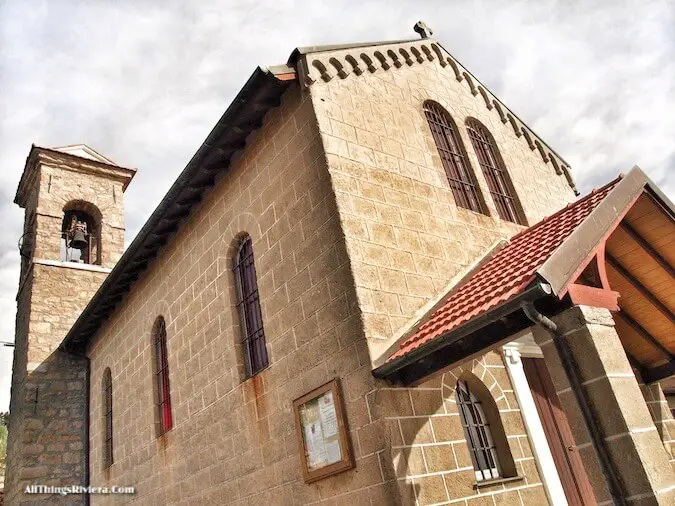
Just before your final ascent to the church (it’s built on top of a hill), you may spot a road on your right hand side called Via della Cava – make a mental note of that because this is where you will have to return for your descent.
The road will eventually merge into an old mule track, overgrown in parts and not always easy to manoeuvre …
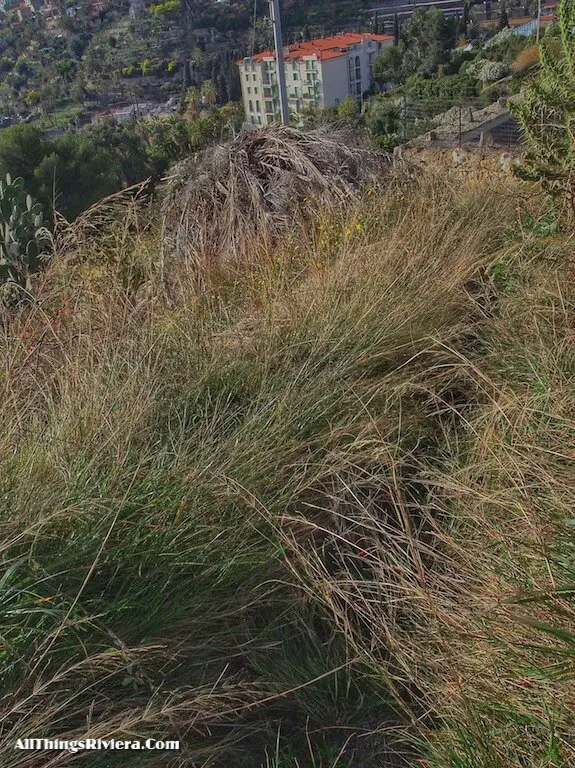
… but it will eventually lead you back to the outskirts of Bordighera. (There is also a bus stop where it joins the main road.)
So: what is there to see along the way? Largely, to be honest, the not-so-picturesque side of the Italian Riviera, greenhouses in various states of neglect, much general scruffiness (water pipes across the trail), and many great views over the sea that are photo-bombed by various bits of agricultural infrastructure.
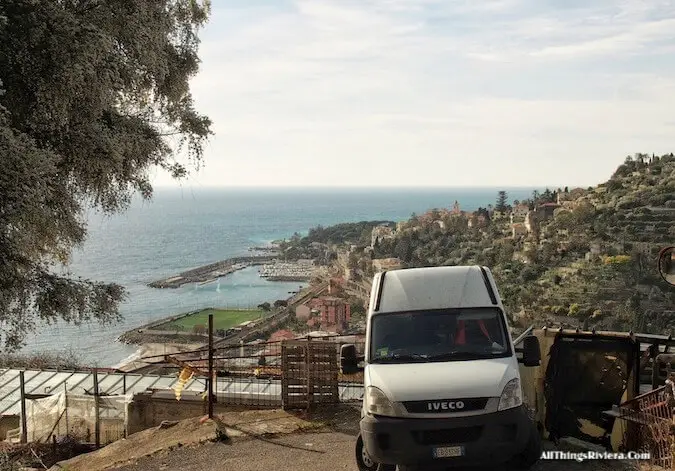
The land between the cold reserve of the mountains and the hot intensity of the Mediterranean lowlands often turns out to be, like Spinal Tap’s bassist Derek Smalls (who feels caught between the “fire and ice” of the band’s two leading men), something in the middle – like luke-warm water.
On the other hand, it taught us a few things about the Riviera of which we knew little, after three years of living in the area and exploring it extensively.
Also, the time investment is small: we finished our hike early enough to have lunch in the Cafe Monet opposite Bordighera’s train station, possibly the best unpretentious little “every-day” restaurant along the coast.
One more thing, on the topic of “hiking in Italy can be full of surprises”: the route was so well-described in the brochure that we got from the Bordighera tourism office that we never lost our way or were even much in doubt of where to go.
I had expected one of these days of never-quite-knowing-where-to-turn: the desciption was full of odd phrases such as “turn right between the discarded bath tub …
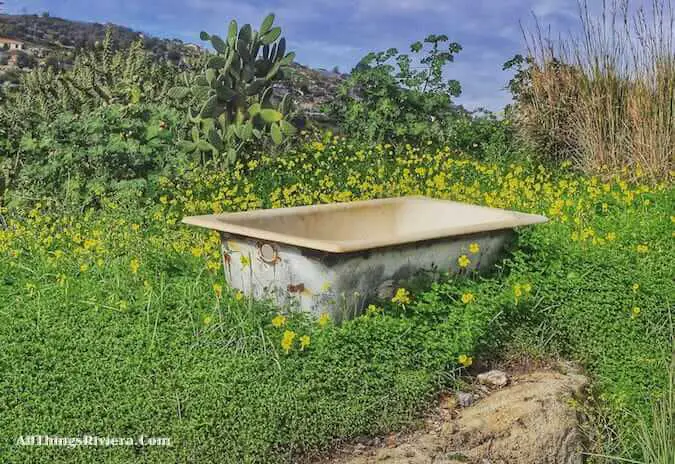
… and the big black dog that barks like mad”. I exaggerate, but only slightly.
In the end, we need not have worried. Hiking the steep Bordighera hills, we had a trail that was well marked throughout: you cannot go wrong for long if you remember to look for the red-and-white double stripes of the major hiking routes.
Small blessings like these are often the ingredients of a good day out in the countryside, even if the countryside itself is anything but perfect.

